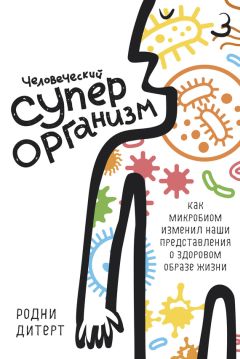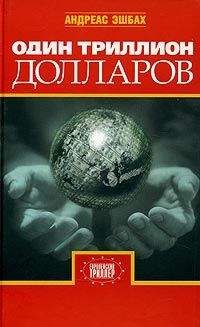Джон Тёрни - Я – суперорганизм! Человек и его микробиом
Human Microbiome Project Consortium (2012). Structure, function and diversity of the healthy human microbiome. Nature, 486: 207–214.
Jackson, Mark (2006). Allergy: The History of a Modern Malady. Reaktion Books.
Jeurink, P., et al (2013). Human milk: a source of more life than we imagine. Beneficial Microbes, 4: 17–30.
Joyce, Christopher (2014). Soil Doctors Hit Pay Dirt In Manhattan’s Central Park. http://www.npr.org/2014/10/02/353066730.
Kankainen, M., et al (2009). Comparative genomic analysis of Lactobacillus rhamnosus GG reveals pili containing a human-mucus binding protein. Proceedings of the National Academy of Sciences. 106:17193–17198.
Kaptchuk, Ted, et al (2010). Placebos without Deception: A Randomised Controlled Trial in Irritable Bowel Syndrome. PloS One. 0015591.
Karlsson, F. H., et al (2014). Metagenomic Data Utilization and Analysis (MEDUSA) and Construction of a Global Gut Microbial Gene Catalogue. PLoS Comput Biol 10: e1003706.
Karr, Jonathan, et al (2012). A Whole-Cell Computational Model Predicts Phenotype from Genotype. Cell, 150:398–401.
Keeney, Kristie, et al (2014). Effects of Antibiotics on Human Microbiota and Subsequent Disease. Annual Review of Microbiology. 68: 217–35.
Khanna, Sahil, et al (2014). Clinical Evaluation of SER–90, a Rationally Designed, Oral Microbiome-Based Therapeutic for the Treatment of Recurrent Clostridium difficile. Доклад прочитан на конференции Американской гастроэнтерологической ассоциации. http://www.gastro.org/news/articles/2014/08/14/new-frontiers-of-fecal-microbiota-transplantation.
Klein, Jan (1982). Immunology: The Science of Self – Nonself Discrimination. John Wiley.
Koenig, Amy, et al (2010). Succession of microbial consortia in the developing infant gut microbiome. Proceedings of the National Academy of Sciences, 1000081107.
Kort, Remco, et al (2014). Shaping the oral microbiota through intimate kissing. Microbiome, 2:41.
Kotula, Jonathan, et al (2014). Programmable bacteria detect and record an environmental signal in the mammalian gut. Proceedings of the National Academy of Sciences, 111: 4838–4843.
Kroes, I. et al (1999). Bacterial diversity within the human subgingival crevice. Proceedings of the National Academy of Sciences. 96: 14547–52.
La Rosa, Patricio, et al (2014). Patterned progression of bacterial populations in the premature infant gut. Proceedings of the National Academy of Sciences, 111:12522–12527.
Lax, S., et al (2014). Longitudinal analysis of microbial interaction between humans and the indoor environment. Science, 345: 1048–1052.
Lecuit, Marc and Marc Eloit (2013). The human virome: new tools and new concepts. Trends in Microbiology, 21: 510–515.
Lederberg, Joshua (2000). Infectious History. Science, 288: 287–293.
Lee, Stewart (2010). How I Escaped my Certain Fate – The Life and Deaths of a Stand-Up Comedian. Faber.
Lee, Yun, and Sarkis Mazmanian (2010). Has the Microbiota Played a Critical Role in the Evolution of the Adaptive Immune System? Science, 330: 1195568.
Ley, R., et al (2005). Obesity alters gut microbial ecology. Proceedings of the National Academy of Sciences, 102: 11070–11075.
Li, Juanha, et al (2014). An Integrated Catalogue of reference genes in the human gut microbiome. Nature Biotechnology, выложено на сайте 6 июля 2014 года.
Loscalzo, Joseph (2013). Gut Microbiota, the Genome, and Diet in Atherogenesis. New England Journal of Medicine, 368:17.
Luckey, T. (1972). Introduction to intestinal microecology. American Journal of Clinical Nutrition. 25: 1292–1294.
Lyte, Mark (2014). Microbial endocrinology: Host – microbiota neuroendocrine interactions. Gut Microbes, 5: 28682.
Lyte, Mark, and Primrose Freestone, eds (2010). Microbial Endocrinology: Interkingdom Signaling in Infectious Disease and Health. Springer.
Martin, Emily (1994). Flexible Bodies: The role of immunity in American culture from the days of polio to the age of AIDS. Beacon Press.
Matzinger, P. (2002). The danger model: a renewed sense of self. Science, 296: 301–305.
Maxman, A. (2013). Designing for microscopic life in the great indoors (Interview with Jessica Green). New Scientist, 20 July.
Maynard, Craig, et al (2012). Reciprocal interactions of the intestinal microbiota and immune system. Nature, 489: 231–241.
Mazmanian, S., et al (2005). An immunomodulatory molecule of symbiotic bacteria directs maturation of the host immune system. Cell, 122: 107–118.
Mazmanian, Sarkis, et al (2008). A microbial symbiosis factor prevents intestinal inflammatory disease. Nature, 453: 620–625.
Mazmanian, Sarkis (2009). Microbial health factor. The Scientist, August 1.
McCord, Aleia et al (2013). Faecal microbiomes of non-human primates in Western Uganda reveal species-specific communities largely resistant to habitat perturbation. American Journal of Primatology, 22238.
McFall-Ngai, Margaret (2007). Care for the community. Nature, 445: 153.
McFall-Ngai, Margaret, et al (2013). Animals in a bacterial world, a new imperative for the life sciences. Proceedings of the National Academy of Sciences, 110, 3229–3236.
Minot, S., et al (2013). Rapid evolution of the human gut virome. Proceedings of the National Academy of Sciences, 110: 12450–12455.
Modi, Sheetal (2013). Antibiotic treatment expands the resistance reservoir and ecological network of the phage metagenome. Nature, 499: 219–223.
Moeller, Andrew, et al (2012). Chimpanzees and humans harbour compositionally similar gut enterotypes. Nature Communications, 3: 1179.
Moeller, Andrew, et al (2014). Rapid changes in the gut microbiome during human evolution. Proceedings of the National Academy of Sciences, Nov 3. doi: 10.1073/pnas. 1419136111.
Montgomery, Scott (1996). The Scientific Voice. Guilford Press.
Morrow, L., et al (2010). Probiotic prophylaxis of ventilator-associated pneumonia: a blinded, randomized, controlled trial. American Journal of Respiratory & Critical Care Medicine. 182: 1058–1064.
Naik, Shruti, et al (2012). Compartmentalized Control of Skin Immunity by Resident Commensals. Science, 337: 1115–1119.
Nakatsuji, Teruaki, et al (2013). The microbiome extends to subepidermal compartments of normal skin. Nature Communications, 4. Feb 5.
Nelson, David, et al (2012) Bacterial Communities of the Coronal Sulcus and Distal Urethra of Adolescent Males. PloS One, 7: e36298.
Nerlich, Brigitte, and Lina Hellsten (2009). Beyond the human genome: microbes, metaphors and what it means to be human in an interconnected post-genomic world. New Genetics and Society, 28: 19–36.
Noble, Denis (2006). The Music of Life: Biology Beyond Genes. Oxford University Press.
Norris, Vic, et al (2013). Hypothesis: bacteria control host appetites. Journal of Bacteriology, 195:411.
O’Malley, Maureen (2014). Philosophy of Microbiology. Oxford University Press.
Ogilvie, Lesley, et al (2013). Genome signature-based dissection of human gut metagenomes to extract subliminal viral sequences. Nature Communications, 3420.
Okada, H., et al (2010). The ‘hygiene hypothesis’ for autoimmune and allergic diseases: an update. Clinical & Experimental Immunology, 160: 1–9.
Paxson, Heather (2008). Post-Pasteurian cultures: The microbiopolitics of raw-milk cheese in the United States. Cultural Anthropology, 23: 15–47.
Petrof, E., et al (2013). Microbial ecosystems therapeutics: a new paradigm in medicine? Beneficial Microbes 4: 53–65.
Petrof, E., et al (2013). Stool substitute transplant therapy for the eradication of C. difficile infection: RePOOPulating the gut. Microbiome 1:3.
Pollan, Michael (2006). The Omnivore’s Dilemma: A Natural History of Four Meals. Penguin.
Pradeu, Thomas (2012). The Limits of the Self: Immunology and Biological Identity. Oxford University Press.
Pradeu, Thomas, and Edwin Cooper (2012). The danger theory: 20 years later. Frontiers in Immunology, 3: 287.
Pray, Leslie, et al (2012). The Human Microbiome, Diet and Health: Workshop Summary. Institute of Medicine, US.
Price, Lance (2010). The Effects of Circumcision on the Penis Microbiome. PloS One, 5: e8422.
Pride, David, et al (2012). Evidence of a robust resident bacteriophage population revealed through analysis of the human salivary genome. ISME Journal, 6: 915–926.
Ravel, J., et al (2011). Vaginal microbiome of reproductive-age women. Proceedings of the National Academy of Sciences. 108 Suppl 1:4680–7.
Relman, David (2012). The human microbiome: ecosystem resilience and health. Nutrition Reviews, 70: S2 – S9.
Relman, David, et al (2009). Microbial Evolution and Co-Adaptation – A Tribute to the Life and Scientific Legacies of Joshua Lederberg. National Academy of Sciences, US.
Richmond, Ben (2014). Cola-flavoured Genitals, and Other Potential Uses for Microbiome Hacking. http://motherboard.vice.com September 11.
Ridaura, V., et al (2013). Gut microbiota from twins discordant for obesity modulate metabolism in mice. Science, 341: 1241214.
Roach, Mary (2013). Gulp: Adventures in the Alimentary Canal. Oneworld.
Rook, Graham (2012). A Darwinian view of the Hygiene or ‘Old Friends’ hypothesis. Microbe, 7: 173–180.
Rook, Graham (2013). Regulation of the immune system by biodiversity from the natural environment: An ecosystem service essential to health. Proceedings of the National Academy of Sciences, 110: 18360–18367.
Rosebury, Theodor (1969). Life on Man. Secker and Warburg.
Sachs, Jessica Snyder (2007). Good Germs, Bad Germs: Health and Survival in a Bacterial World. Hill and Wang.
Saey, Tina (2014). Here’s the poop on getting your gut microbiome analysed. www.sciencenews.org June 17.
Salter, Susannah, et al (2014). Reagent and laboratory contamination can critically impact sequence-based microbiome analysis. BMC Biology, 12: 87.
Sanford, James, and Richard Gallo (2013). Functions of the skin microbiota in health and disease. Seminars in Immunology, 25: 370–377.
Scheuring, Istvan, and Douglas Wu (2012). How to assemble a beneficial microbiome in three easy steps. Ecology Letters, 15: 1300–1307.
Schluter, Jonas, and Kevin Foster (2012). The evolution of mutualism in gut microbiota via epithelial selection. PLoS Biology, 10: e1001424.
Schnorr, Stephanie, et al (2014). Gut microbiome of the Hadza hunter-gatherers. Nature Communications, 5: 3654.
Scott, Julia (2014). My No-Soap, No-Shampoo, Bacteria-Rich Hygiene Experiment. New York Times Magazine, May 22.
Seekatz, Anna, et al (2014). Recovery of the Gut Microbiome following Fecal Microbiota Transplantation. mBio, 5: e00893.
Shaikh-Lesko, Rina (2014). Visualising the ocular microbiome. The Scientist, May 12.
Shanahan, Fergus, and Eamonn Quigley, (2014). Modification of the gut microbiome to maintain health or treat disease. Gastroenterology, 146: 1554–1563.
Simons, Jake (2014). Biodesign: Why the future of our cities is soft and hairy. http://edition.cnn.com/2014/08/27/tech/innovation/biodesign-why-the-future-of-our-cities-is-soft-and-hairy.
Singer, Emily (2013). Our bodies, our data. Quanta Magazine online. October. http://www.simonsfoundation.org/quanta/20131007-our-bodies-our-data.
Singh, Nagendra, et al (2014). Activation of Gpr109a, receptor for niacin and the commensal metabolite butyrate, suppresses colonic inflammation and carcinogenesis. Immunity, 40: 128–139.
Smith, Mark, et al (2014). How to regulate faecal transplants. Nature, 506: 290–91.
Smith, Peter (2014). Is your body mostly microbes? Actually, we have no idea. Boston Globe, September 14.
Smith, Peter (2014). A new kind of transplant bank. New York Times, Feb 17.
Sommer, Felix, and Fredrik Bäckhed (2013). The gut microbiota – masters of host development and physiology. Nature Reviews Microbiology, 11: 227–238.
Song, Se Jin, et al (2013). How delivery mode and feeding can shape the bacterial community in the infant gut. Canadian Medical Association Journal, 185: 373–374.
Song, Se Jin, et al (2013). Cohabiting family members share microbiota with one another and with their dogs. eLife, 2: e00458.
Sonnenberg, Justin, et al (2004). Getting a grip on things: how do communities of bacterial symbionts become established in our intestine? Nature Immunology, 5:569–573.
Staley, James and Allen Konopka (1985). Measurement of in situ activities of nonphotosynthetic microorganisms in aquatic and terrestrial habitats. Annual Review of Microbiology, 39: 321–46.
Sterling, Bruce (2002). Tomorrow Now: Envisioning the Next Fifty Years. Random House.
Sullivan, et al (2011). Clinical efficacy of a specifically targeted anti-microbial peptide mouth rinse: targeted elimination of Streptococcus mutans and prevention of demineralization. Caries Research. 45: 415–428.
Tang, W., et al (2013). Intestinal microbial metabolism of phosphatidylcholine and cardiovascular risk. New England Journal of Medicine, 368: 1575–1584.
Thaiss, Christoph, et al (2014). Exploring new horizons in microbiome research. Cell, Host and Microbe. 15: 662–667.
Tillisch, Kirsten, et al (2013). Consumption of fermented milk product with probiotic modulates brain activity. Gastroenterology, 144: 1394–1401.
Tito, Raul (2012). Insights from characterizing extinct human gut microbiomes. PloS One. 7: e51146.
Tomes, Nancy (1998). The Gospel of Germs: Men, Women and the Microbe in American Life. Harvard University Press.




